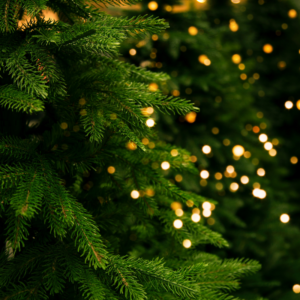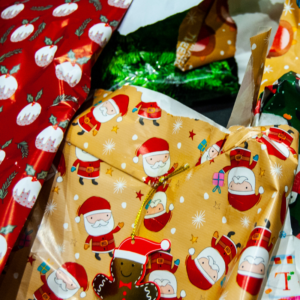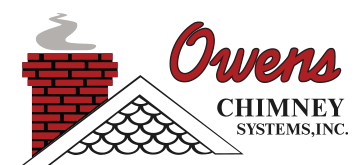As the holiday season comes to a close, you may have your eye on that spent, live tree as a potential fuel source for your fireplace. After all, if it needs to be disposed of, so it may as well be useful, right?
Burning your Christmas tree is not just less than ideal – it’s downright dangerous.
Your Christmas tree is, of course, wood, so it would seem like a natural option to burn it in your wood-burning fireplace or stove. Unfortunately, that’s not something we’d recommend. Burning your Christmas tree is not just less than ideal – it’s downright dangerous.
Why Is Burning My Christmas Tree in My Fireplace Dangerous?
Why should your Christmas tree be disposed of outside your home fireplace? Well, there are actually quite a few reasons.
 Intense fires. Firs, spruces, and pines make excellent, festive Christmas trees. But they don’t make the best fireplace logs once Christmas is past. These evergreen varieties have a high resin content and waxy needles, and both these substances can burn intensely.
Intense fires. Firs, spruces, and pines make excellent, festive Christmas trees. But they don’t make the best fireplace logs once Christmas is past. These evergreen varieties have a high resin content and waxy needles, and both these substances can burn intensely.- Erratic sparks. Pine needles, especially when dry, generate a lot of sparks when they burn. They also seem to take on a life of their own due to fluctuating temperatures and drafts, which could lead to sparks landing in your room or flying up the chimney and creating a chimney fire.
- Uncontrollable blaze. Christmas trees that were infrequently watered can become quite dry in areas, and the speed at which the resulting blaze can grow might catch you off guard.
- Buildup & smoke. If your tree was well-maintained, it may be too wet to burn efficiently, despite how dry it appears. A poor burn due to too much moisture in your logs has risky side effects: build up of creosote (a dark, combustible by-product of incomplete combustion), cooler flue gases which may not vent properly, and a smoky fire that can cause discomfort, damage to your living space, and respiratory hazards.
What’s Wrong With an “Intense” Fire?
What’s wrong with a fire burning really strong? Doesn’t intensity spell warmth? A hot fire is good, but this is a case of far too much of a good thing.
🔥 Higher potential of damage.
Too much heat, too fast isn’t cozy. It’s potentially quite damaging to the components of your fireplace system. A shock to the system from a dramatic temperature change can crack clay flue tiles, damage the firebox, or compromise the integrity of your chimney.
🔥 Out-of-control flames.
Too great of fire intensity and a rapid, unpredictable burn means your fire will be much more difficult to control – which means it can quickly become out of control.
🔥 Increased chance of a chimney fire.
A hot, high blaze can ignite any existing soot or creosote accumulation in your chimney, increasing the chance of a chimney or roof fire.
What About Other Holiday Trappings?
 Other holiday left-overs, such as gift wrap, disposable dining utensils, packaging, cardboard boxes, and other trash, are also not acceptable to burn in your fireplace. These items contain chemicals, some of which are toxic and become released into the air when burned. Some also generate heavy, dark smoke that can damage furnishings and trigger buildup in your flue.
Other holiday left-overs, such as gift wrap, disposable dining utensils, packaging, cardboard boxes, and other trash, are also not acceptable to burn in your fireplace. These items contain chemicals, some of which are toxic and become released into the air when burned. Some also generate heavy, dark smoke that can damage furnishings and trigger buildup in your flue.
You’re probably ready to rest up and relax once the holiday bustle subsides – so don’t add worry to the new year by burning things that should never make their way into your firebox.
What Should I Burn?
The only fuel intended for your fireplace is seasoned firewood. Seasoned firewood has been sufficiently dried after chopping to reach a reduced moisture content of 15-25 percent. When freshly cut, logs have much higher water content than the ideal amount. This is why logs are split and stored with sides exposed to wind and sun – to naturally dry logs so they become optimal fuel for your fireplace.
Seasoned firewood has cracks and splits and has lost a fair bit of its weight to evaporation. It lights fairly readily with kindling, and the resulting fire won’t have to expend much energy burning off water, as a result combustion is more complete. This means you’ll have a steady, hot blaze that doesn’t cause excessive creosote to build up in your flue.
Fires fuels with seasoned wood will also generate minimal smoke, ensuring any smoke and gases vent properly out the chimney and away from your living space.
Enjoy Your Fireplace With Help From Us
Keeping your chimney system at the top of its game is our specialty. That’s why we live out our commitment to our customers not only in friendly, reliable service, but also by maintaining top industry certifications and staying on top of trade knowledge. This gives you the total package: the beauty and comfort of a well-functioning fireplace and the peace of mind that comes with knowing it’s being maintained with safety in mind.
We’re committed to helping you enjoy your fireplace. This means proper maintenance, regular sweepings, and appropriate fuel. Have any questions or concerns about maintenance, use, or even a potential upgrade? We’re proud to offer over thirty years of quality, expert service. Call us at 704-486-1146 or reach out online today.
